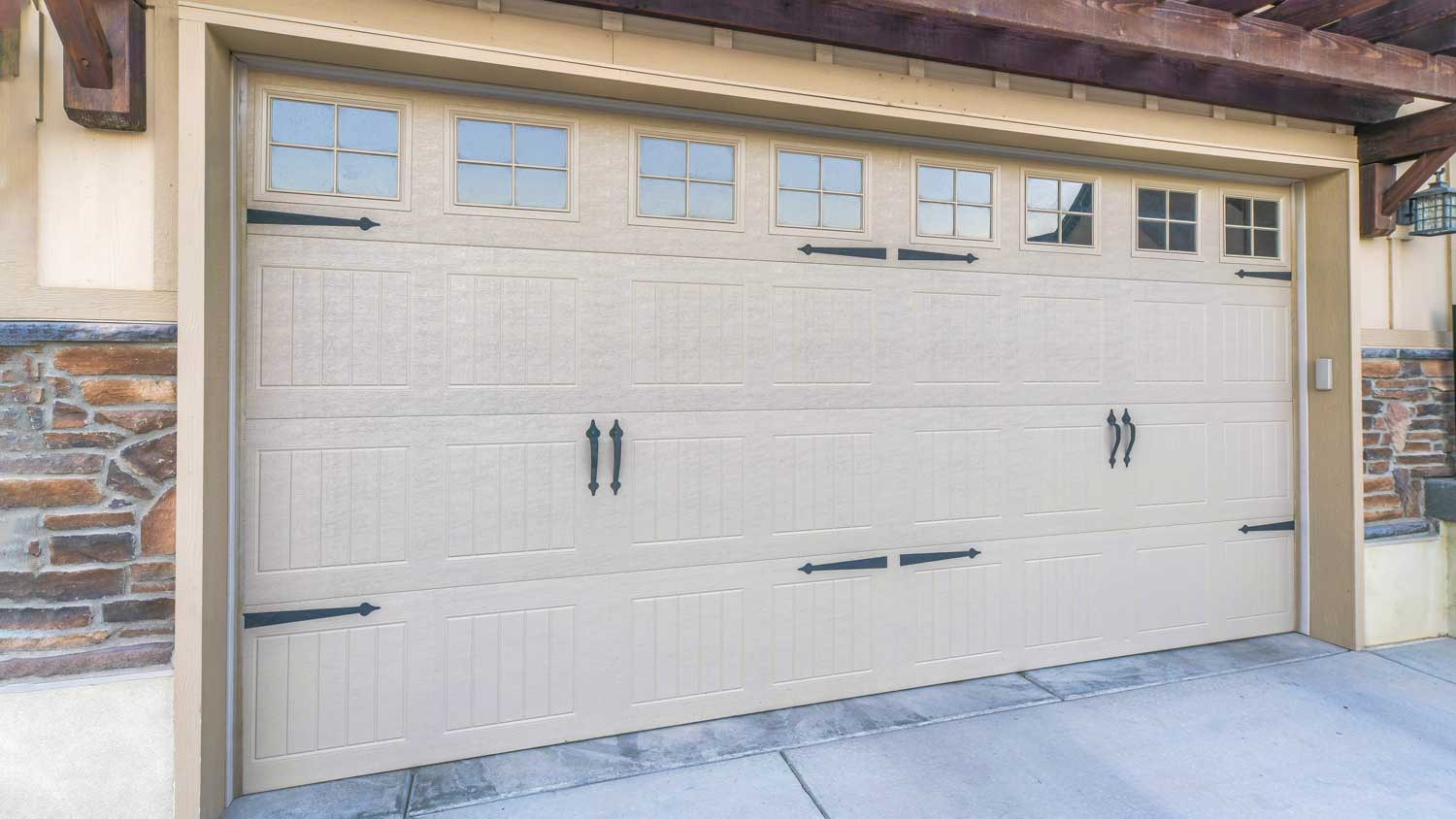What Are the Garage Door Parts Names?
Learn to identify your garage door parts in a blink


A garage door is composed of roughly a dozen different parts.
Garage door parts work together to allow a garage door to roll up and down on a track safely.
With so many garage parts relying on tension, DIY garage door maintenance can be dangerous if there's any type of imbalance that could send a 400-pound door crashing down.
Homeowners can take care of basic garage door maintenance to ensure that parts remain clean and free of rust.
How well do you know your garage door? Knowing proper garage door parts names can help you to better diagnose and repair issues. If you need to call a garage door repair pro for help, having the words to describe what you're seeing can also help you get a clearer estimate. Ready to get on a first-name basis with the contraptions and compartments you count on every day to get in and out of your garage safely? Our garage door parts list will help you understand what keeps your door moving.
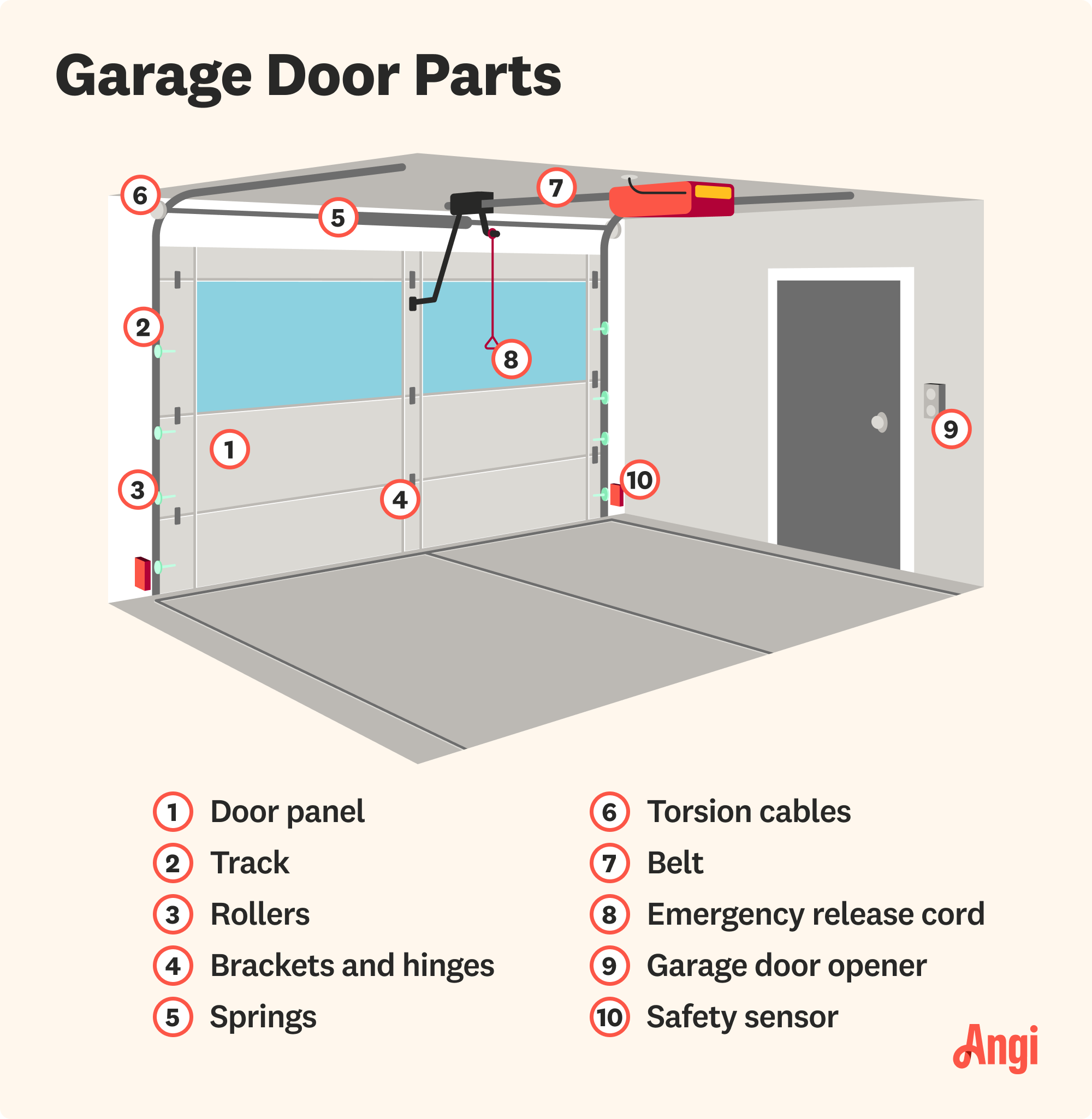
What Are the Different Parts of a Garage Door and How Do They Function?
For a garage door to work, many different garage door parts need to move in tandem. While some parts slide and rotate, others remain stable during operation. Keep reading to better understand the blueprint of a garage door both at rest and in motion!
Door Panels
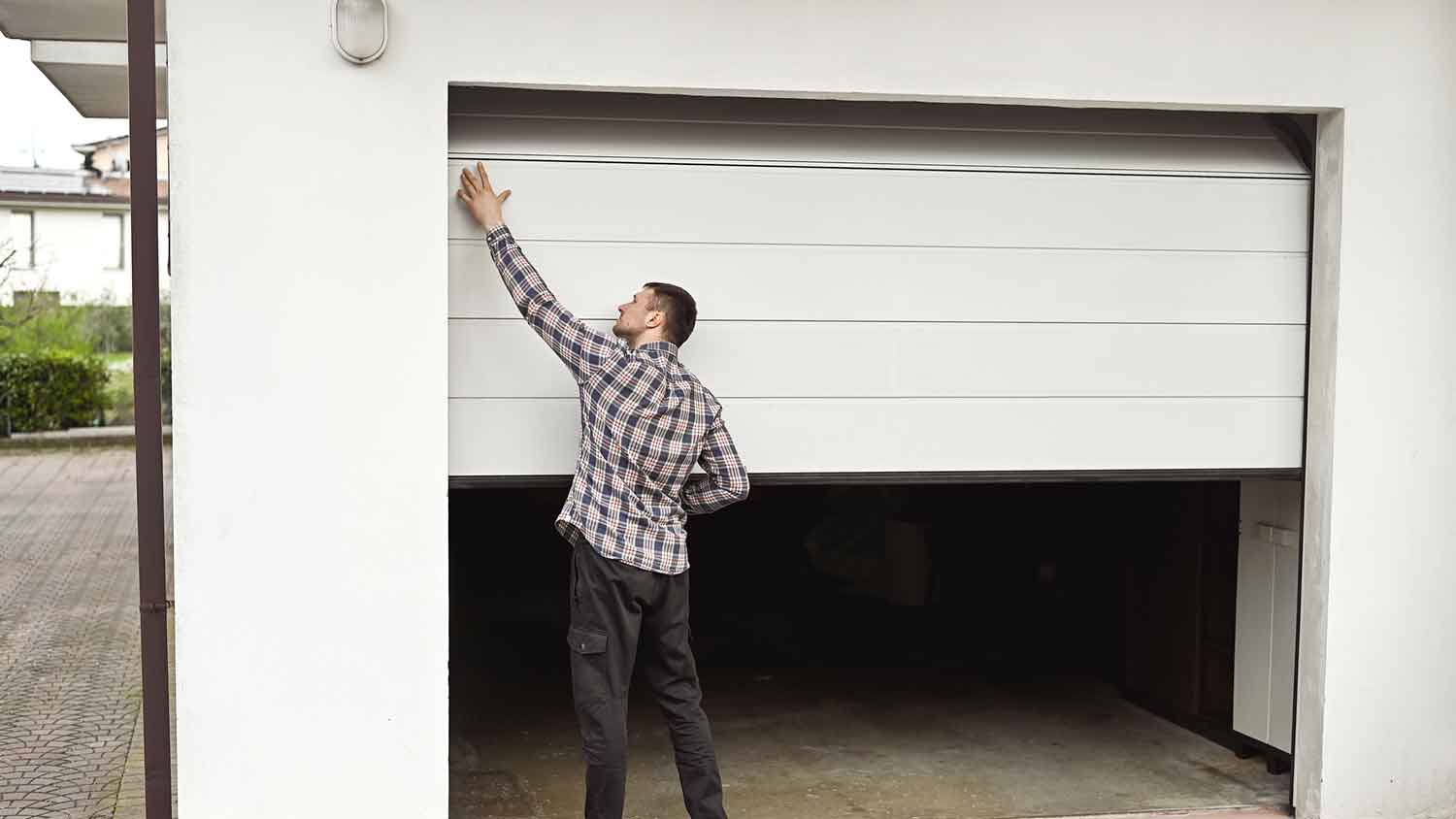
The door panel is the most visible portion of a garage door, and most people think of it first. Garage door panels can be made from steel, fiberglass, wood, or aluminum. Standard door panel designs are reinforced with hinges and struts.
Tracks
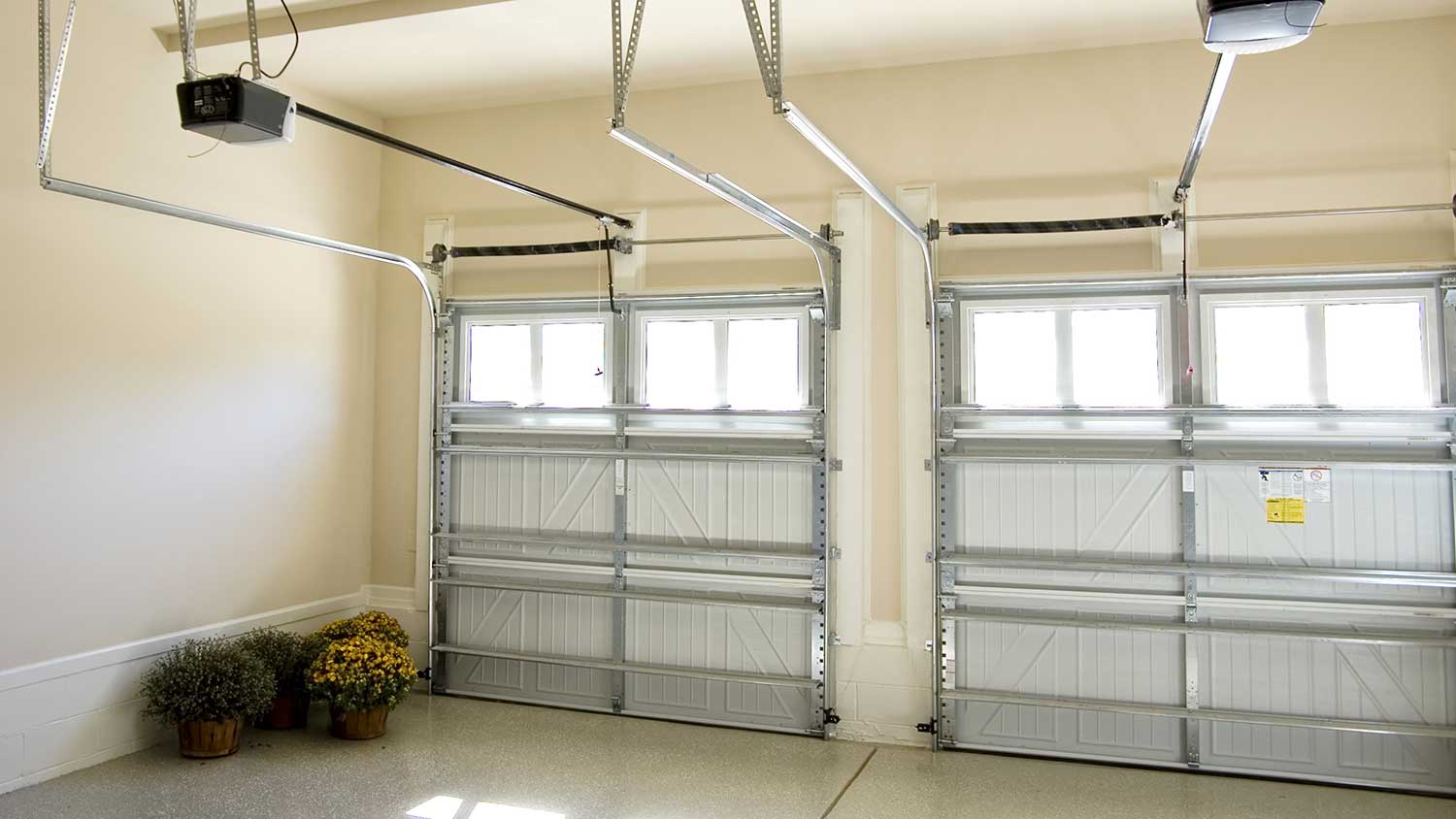
Garage door tracks are also highly visible. Found running vertically on either side of a door, tracks curve at the top in order to allow the door to slide up near the ceiling when in the open position. Most tracks are made of heavy-duty galvanized steel. Garage door tracks can become misaligned. Twisted or cracked tracks need to be replaced. If you're seeing slight bending, tracks can usually be straightened instead of being replaced.
Rollers
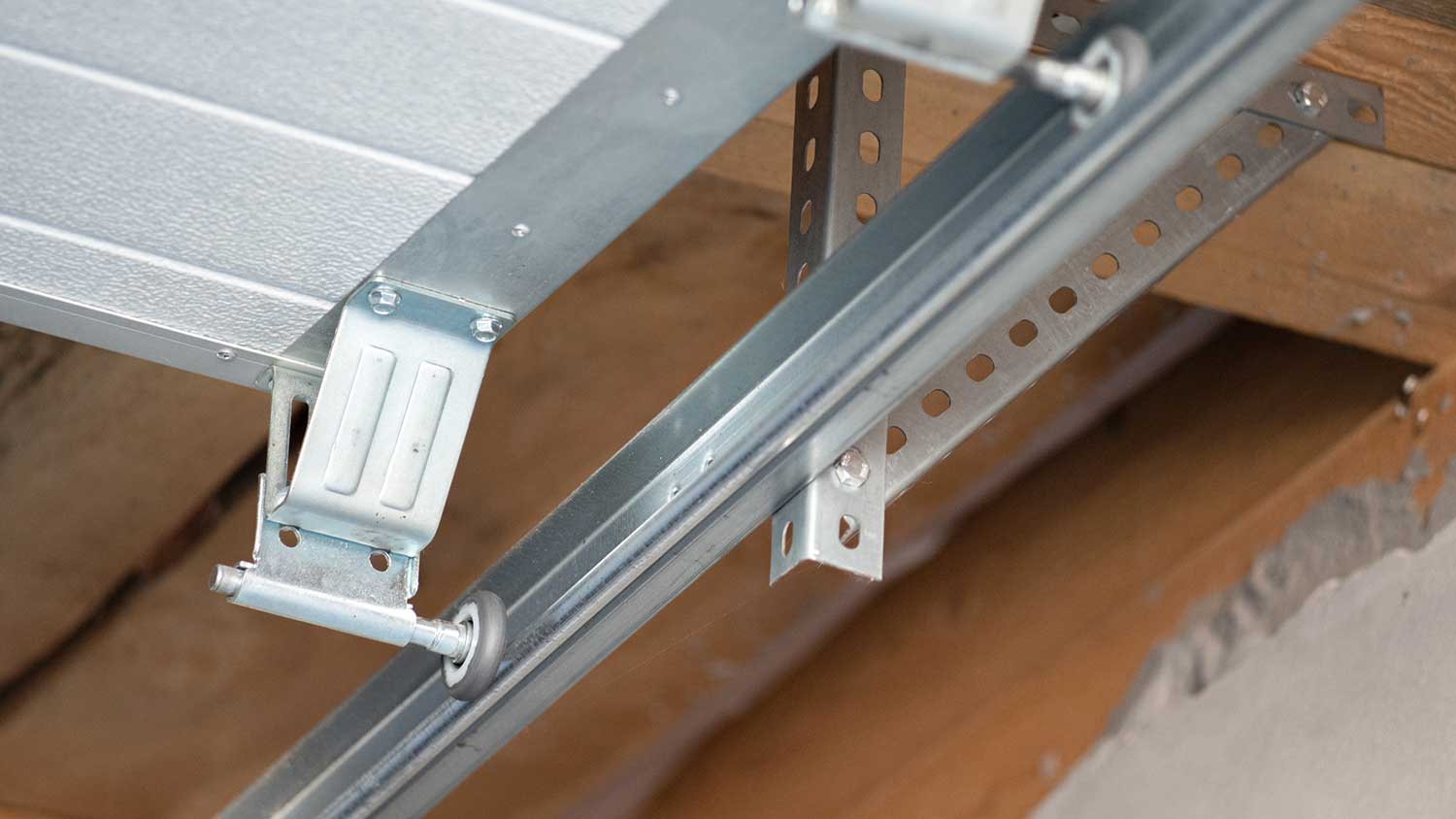
Garage door rollers nest into the door tracks to help lift and lower a garage door. Like tracks, rollers are found attached to either side of the garage door. They resemble small, smooth wheels. If you hear squeaking, your rollers probably need to be lubricated. If rollers are extremely worn, they may need to be replaced.
Brackets and Hinges
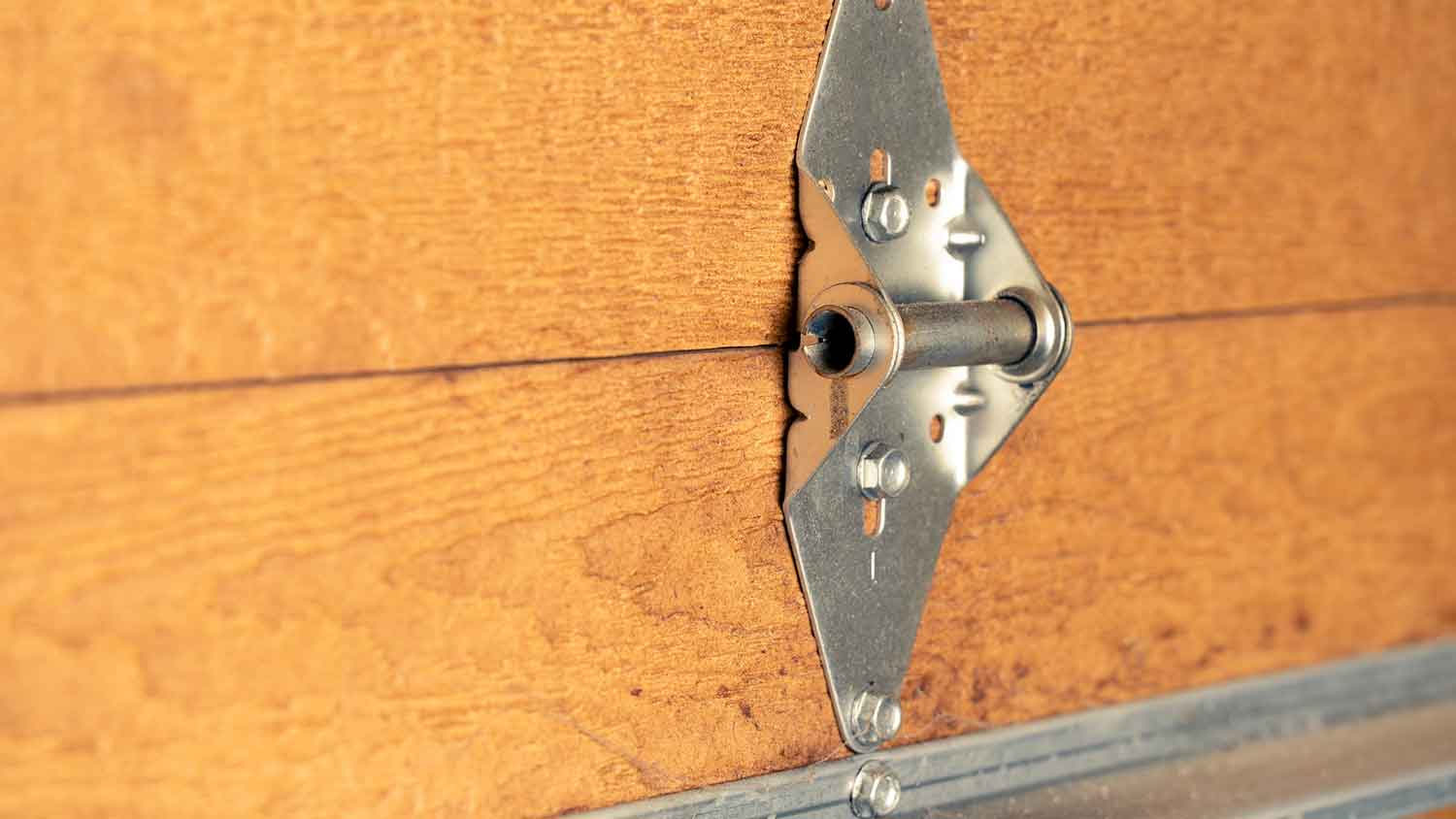
Hinges have the important role of securing garage door panels together. When the door moves along the track, hinges fold to allow the door to bend on its journey. Meanwhile, brackets are used in conjunction with hinges to help stabilize the door system as it moves. If you hear squeaking when the garage door is engaged, this could be caused by poor lubrication or a loose screw.
Springs
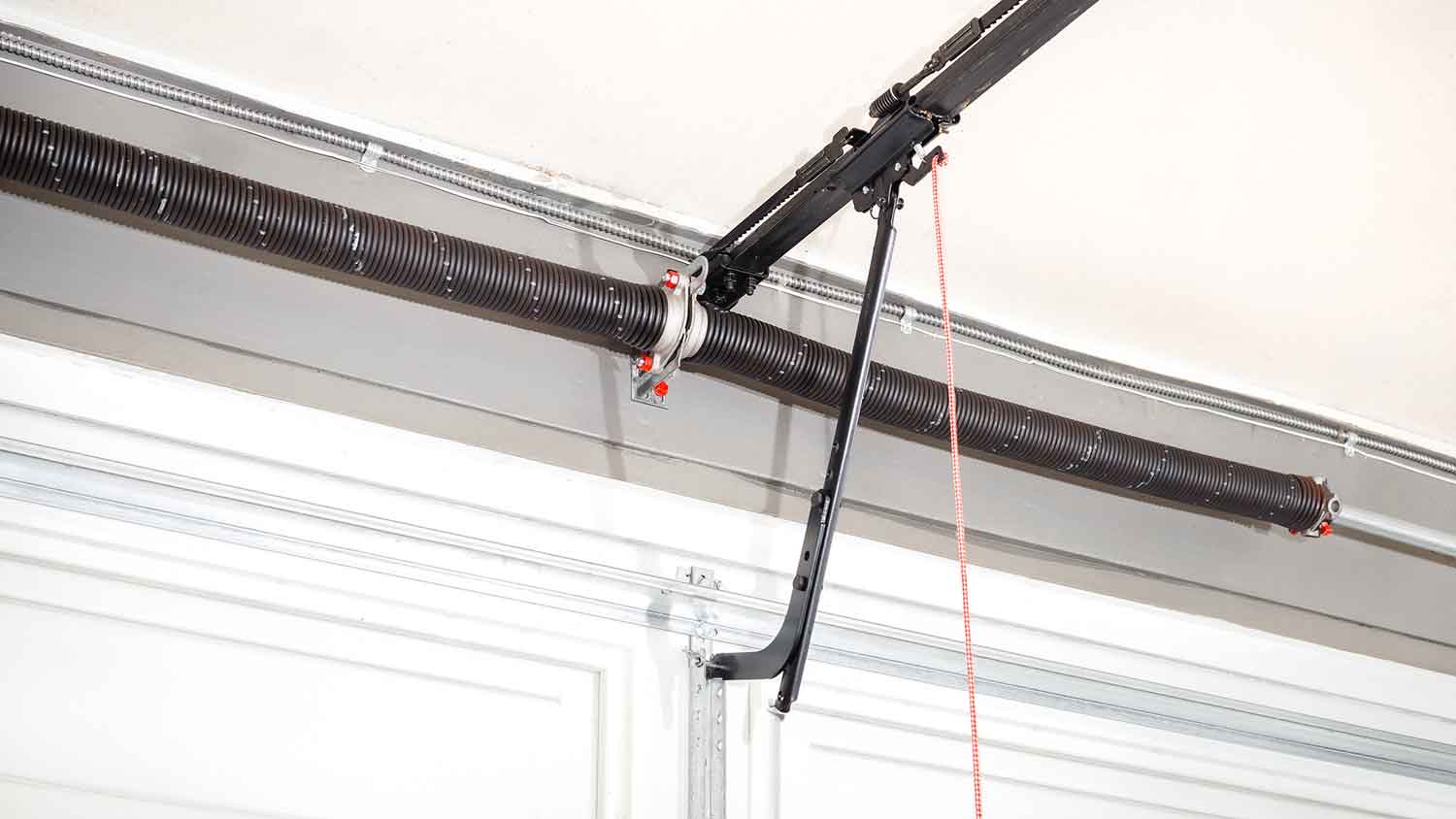
Garage door springs help to control the movement of a garage door as it opens and closes. These are high-tension springs that are important for counterbalancing the extreme heft of a garage door to keep movement smooth and steady. Without properly functioning springs, a garage door could quickly and forcefully slam down to the ground. If you ever need to manually close your garage door, springs are the parts that allow you to control the movement of the door to bring it to a gentle close as it connects with the floor. Springs may be out of balance if your door is struggling to open and close. Be sure to call a professional to handle this potentially dangerous repair job!
Torsion Cables
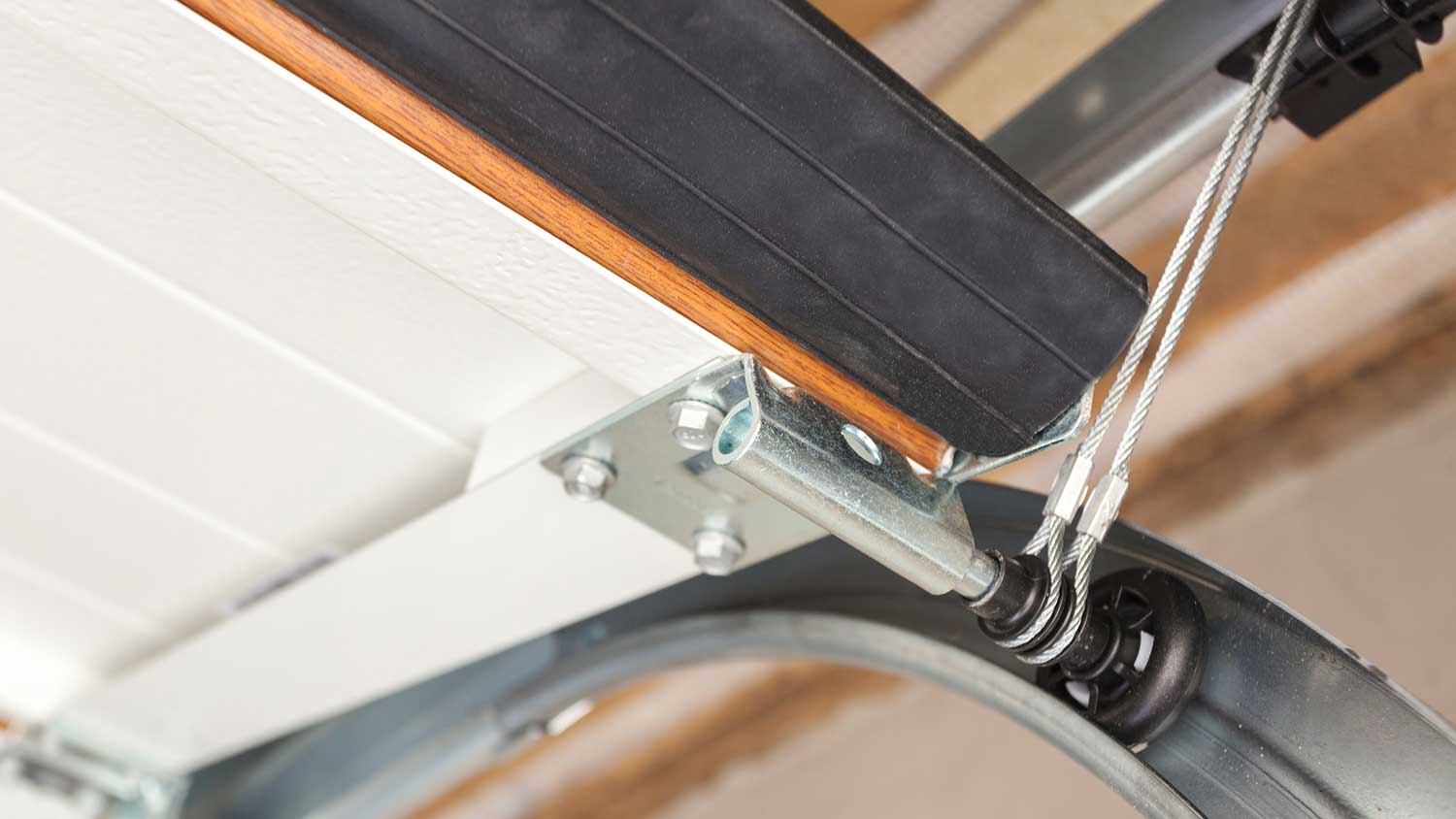
Torsion cables work in conjunction with springs to keep the movement of a garage door balanced. Cables help to ensure that the garage door is balanced enough to remain on the tracks as it moves. If a cable snaps, the garage door could come crashing down.
Belt
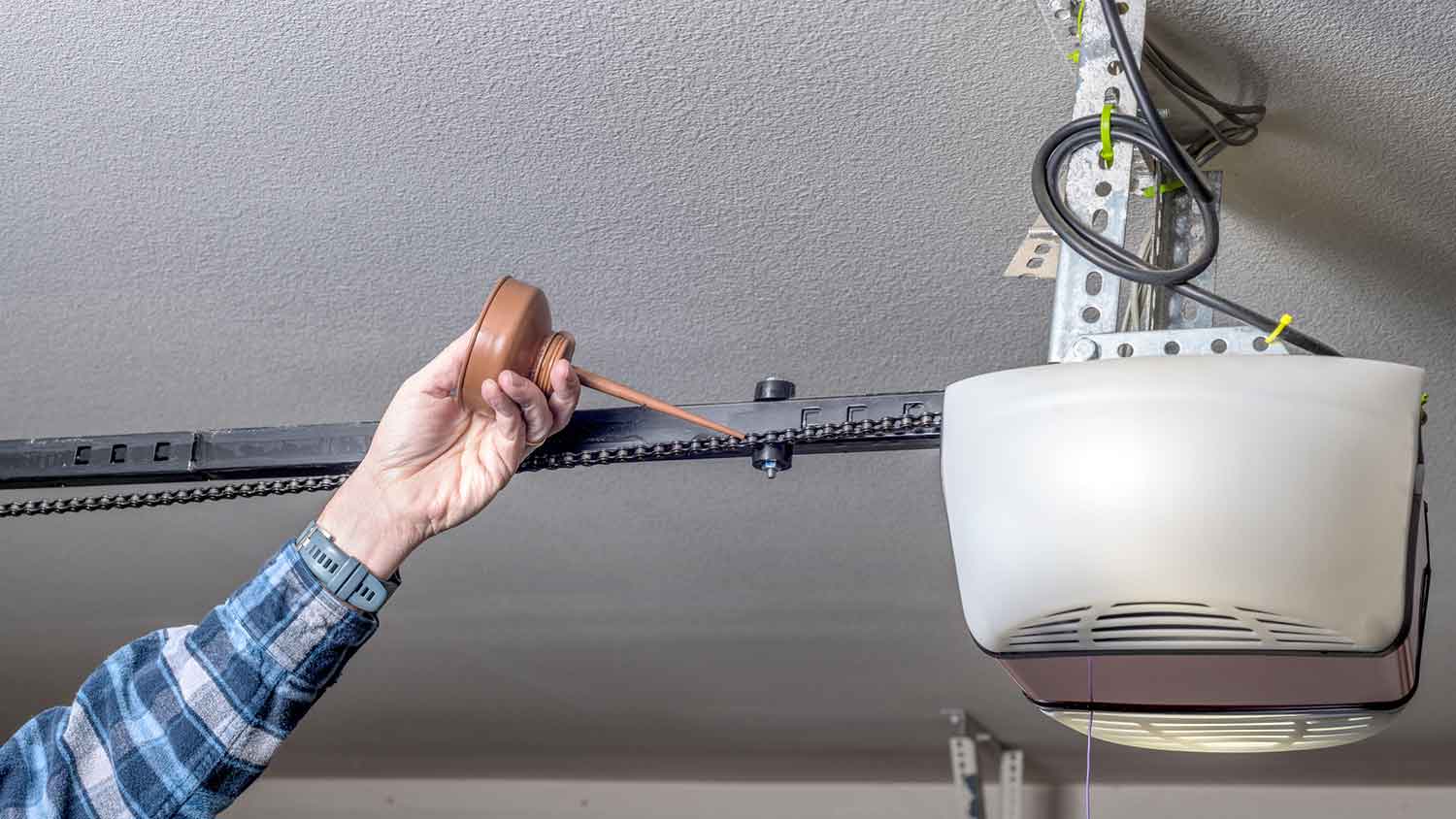
Also known as the garage door chain, the belt is the part that connects the motor of an automatic garage door opener to the physical door panel. Upon activation of the motor, a belt moves. This movement allows the power from the motor to physically lift or lower the door automatically. Belts can become loose from wear and tear from time to time. A telltale sign that your belt is loose is that it's knocking against the track.
Emergency Release Cord
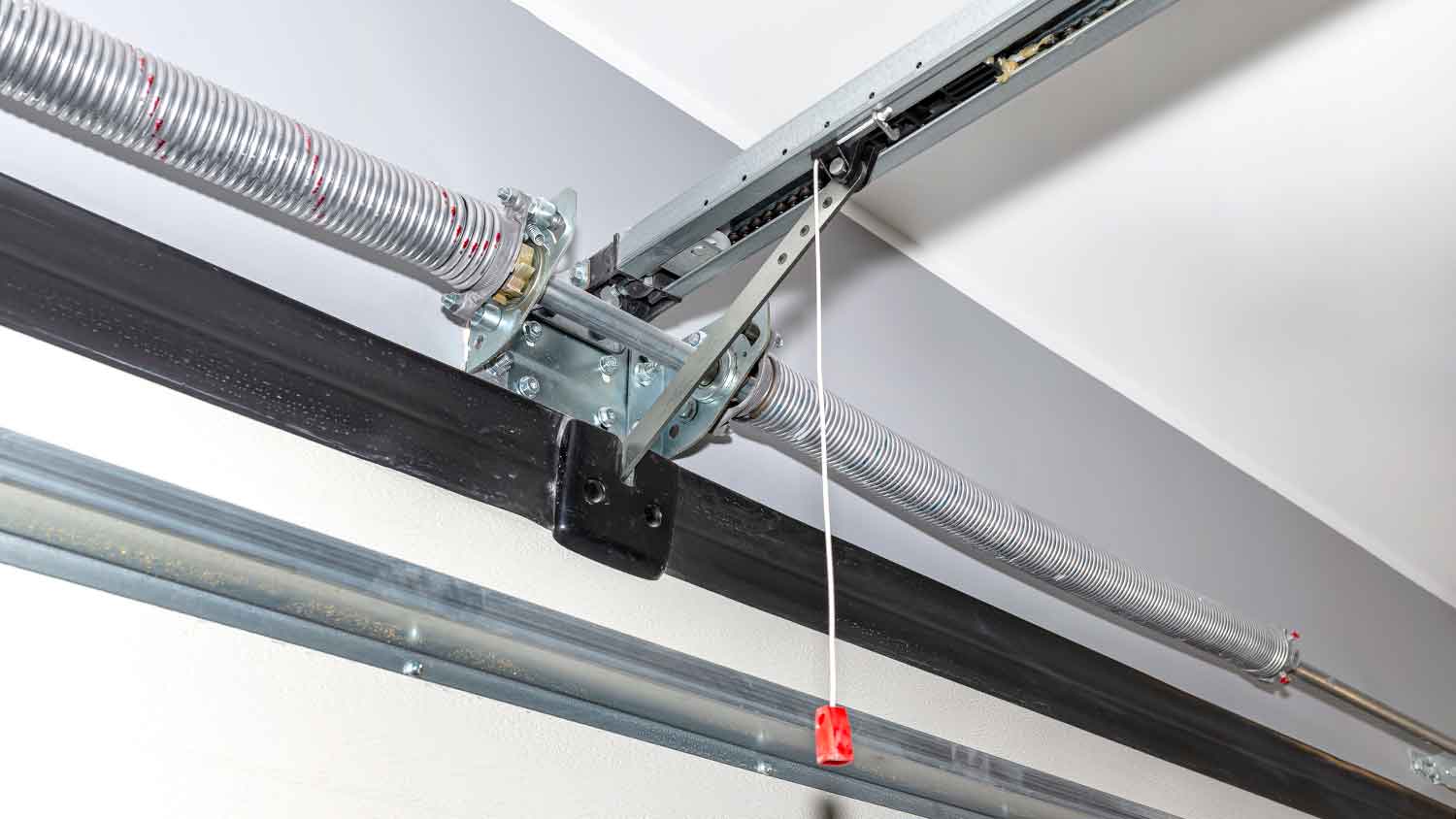
This essential safety feature is there to allow you to manually operate the door if there is a loss of power or broken garage door frequency. An emergency release cord is a red string that hangs from the track system. It should have an easy-to-grab handle on the bottom that allows you to access it with ease quickly.
Weather Seal
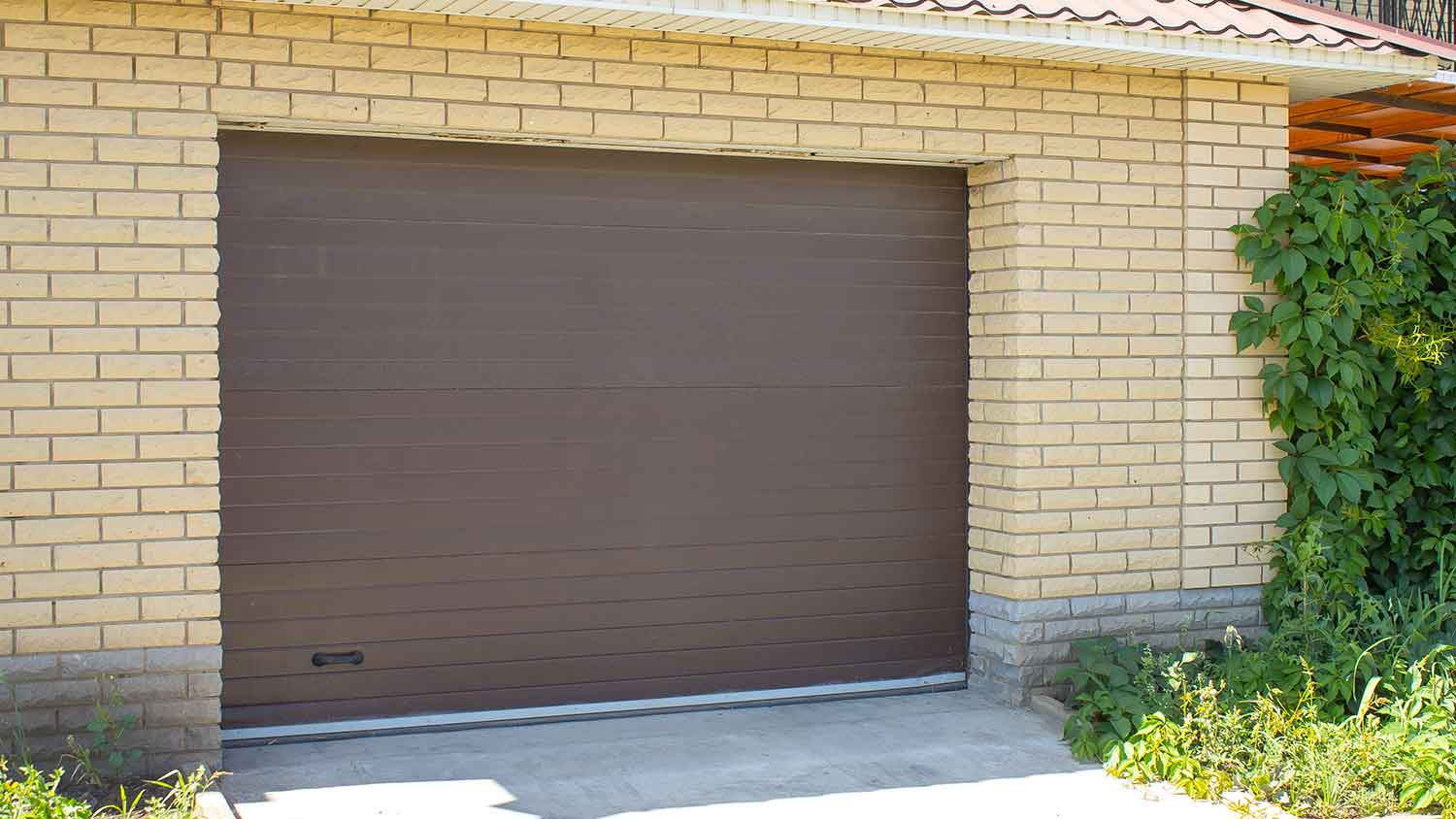
Stretching across the bottom of a garage door, a weather seal is there to protect your garage from the elements. A properly secured seal helps to keep out rain and drafts that make your garage cold and damp. Seals also help to prevent water damage in your garage, lower home heating bills, and prevent critter infestations. If your seal is peeling away from the door, it will need to be replaced.
Garage Door Opener
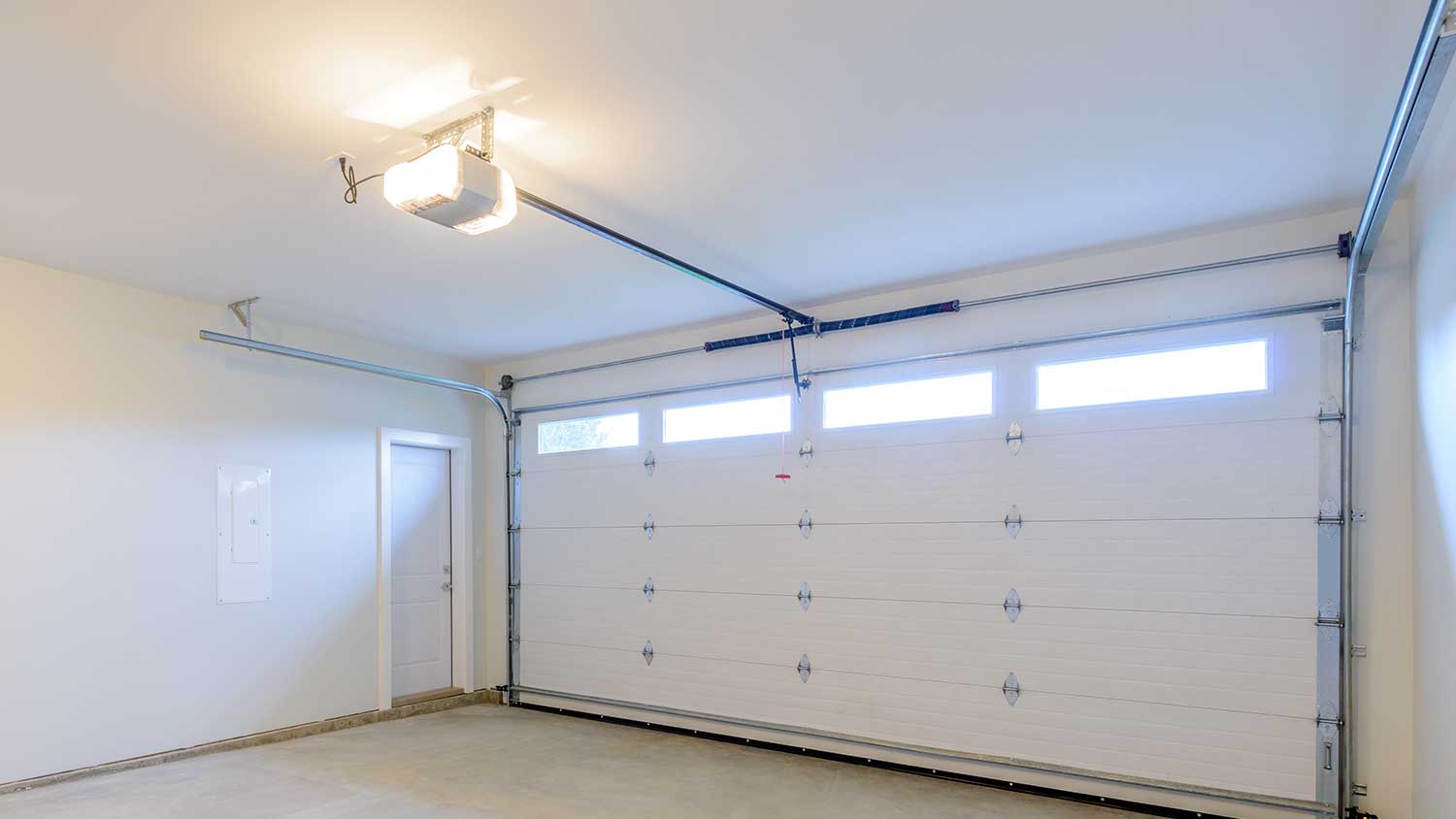
While not essential, a garage door opener is an upgrade that can make life much easier for a homeowner. Most people who press a button instead of getting out of their cars to manually lift their garage door daily already know how garage door openers work. Garage door openers are motorized components that make your door open and close automatically with the touch of a button.
Safety Sensor
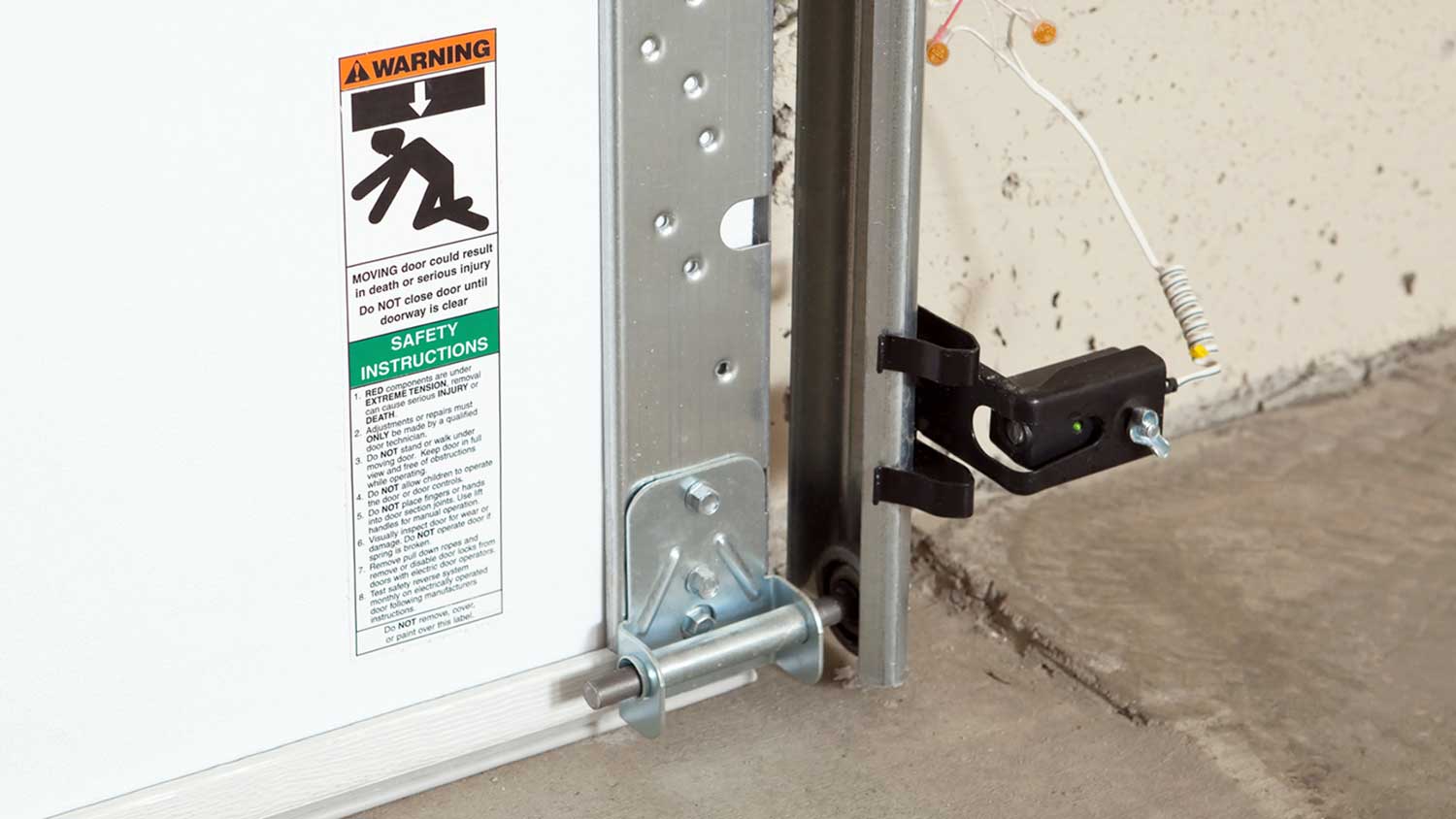
If you've ever noticed a red beam shooting across one end of your garage door to the other, you've seen your garage door's safety sensor. Safety sensors are there to protect people and pets from having a garage door close on them. They can also prevent destruction when a box or heavy item is left in the "crush path" of a garage door. Any item in the path of the beam will "break" the beam. When there's a broken beam, the garage door won't close. While the door may begin descending, it will quickly reverse once an obstruction is detected.
How to Maintain the Different Parts of a Garage Door
While there are some garage door maintenance tips you can follow to keep your garage door in good working order for as long as possible, it's also important to be aware that handling a garage door can be risky. Always defer to a local garage door maintenance pro if you have questions.
Allowing your garage door to get dirty or "squeaky" can cause it to jam. The simplest way to maintain a garage door is to clean the tracks every few months to remove any dirt, rust, sawdust, or debris. Spray brake cleaner into the tracks to break up any grime. A small bristle brush or toothbrush can be used to scrape off rust and debris. When you're done scrubbing, use an old rag or cloth to wipe down the tracks until all debris and residue are gone.
The second DIY garage door maintenance task that homeowners should keep on top of is lubricating garage door parts to keep all of the "gears grinding" whenever you press the button on your automatic garage door opener. Make sure to apply lubrication only after cleaning garage door parts to avoid "gunking up" components. To lubricate garage door parts, simply apply a lubricant to the system's metal rollers and tracks. All hinges should also be lubricated to prevent them from stiffening. Springs can also benefit from lubrication.
Cleaning the garage door panels can help to preserve the look and integrity of your door. Aluminum and vinyl doors can be cleaned using a hose or power washer. Warm, soapy water should be enough to lift debris. Spend time scrubbing any buildup off of the door's exterior. Wooden doors should be gently wiped down with a dry cloth. Any uneven areas can be sanded and filled.
Cost to DIY Garage Door Part Repair vs. Hiring a Pro
Garage door repairs can range in price from $80 to $700. However, most homeowners are paying around $263 to get their doors fixed. Labor generally accounts for up to 80% of a garage door repair cost. While paying just 20% for parts alone with a DIY project is tempting, homeowners must remember that the average garage door can weigh close to 500 pounds. For this reason, homeowners should not attempt DIY garage door maintenance if cables or tension springs are broken or rusted. Contact a local garage door company near you with a list of garage door component names that appear to be involved in the problem you're seeing with your door.



